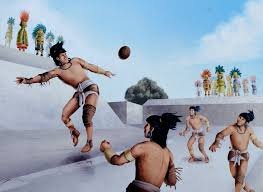Introduction
Among the most captivating figures in Norse mythology, the Valkyries were mystical warrior maidens who played a crucial role in determining the fate of warriors in battle. Depicted as fierce yet ethereal beings, Valkyries were closely associated with Odin, the Allfather, and the great halls of Valhalla. Their legend has endured for centuries, influencing literature, art, and modern popular culture. This article explores the origins of the Valkyries, their connection to warriors, and their evolving representation over time.
The Role of Valkyries in Norse Mythology
In Norse mythology, Valkyries (Old Norse: Valkyrja, meaning "chooser of the slain") were divine female figures who served Odin, selecting which warriors would die in battle and be taken to Valhalla. There, the chosen warriors, known as the Einherjar, would train and prepare for Ragnarök, the ultimate battle that would determine the fate of the gods and the world.
Characteristics of Valkyries
Divine Messengers: Valkyries were seen as intermediaries between the human and divine realms, carrying out Odin’s will.
Warrior Maidens: They were often depicted as fierce and armored figures riding swift horses across the battlefield.
Mystical Powers: Some legends attribute them with supernatural abilities, including flight and shape-shifting.
Valkyries and the Fate of Warriors
The Valkyries were not merely passive observers of battle; they actively influenced its outcome. Warriors who displayed exceptional bravery and skill were chosen to enter Valhalla, while others were left to an afterlife in Helheim, ruled by the goddess Hel. In some sagas, Valkyries were also depicted as shield-maidens who fought alongside warriors.
Famous Valkyries in Norse Mythology
Several Valkyries are named in Norse sagas and Eddic poetry, each with unique attributes:
Brynhildr (Brunhilde): A central figure in the Völsunga saga, she was a Valkyrie who defied Odin’s orders and was punished by being placed in an enchanted sleep.
Sigrún: She appears in Helgakviða Hundingsbana, where she falls in love with the warrior Helgi and helps him in battle.
Hildr: A Valkyrie associated with endless battle, she was said to have the power to resurrect fallen warriors so they could fight again.
The Symbolism of Valkyries
The Valkyries were more than just battle spirits; they symbolized several key themes in Norse mythology:
Honor and Glory: The idea that only the bravest warriors could earn a place in Valhalla reinforced the importance of courage in Viking culture.
Fate and Destiny: Valkyries represented the Norse belief in predestination, as they were said to weave the fates of men.
Femininity and Power: Unlike many ancient mythologies that portrayed women in passive roles, Norse mythology gave Valkyries a dynamic, influential position.
Valkyries in Later Culture
Medieval and Literary Influence
The myth of the Valkyries continued to be explored in medieval literature, particularly in the Poetic Edda and the Prose Edda, written by Snorri Sturluson. These texts solidified their image as both fearsome warriors and mystical beings.
Opera and Romanticism
One of the most famous adaptations of the Valkyrie myth is Richard Wagner’s opera Die Walküre, part of his Ring Cycle. The "Ride of the Valkyries", a powerful orchestral piece, remains one of the most recognized classical compositions in the world.
Valkyries in Modern Pop Culture
The legend of the Valkyries continues to inspire modern entertainment:
Marvel Comics and Films: The character Valkyrie, played by Tessa Thompson in the Thor films, is a direct reference to Norse mythology.
Video Games: Valkyries appear as powerful foes and allies in games such as God of War and Assassin’s Creed: Valhalla.
Fantasy Literature: Many fantasy novels incorporate Valkyrie-like figures, emphasizing their warrior spirit and supernatural abilities.
Conclusion
The Valkyries are one of the most enduring figures in Norse mythology, symbolizing war, honor, and fate. From their divine role in selecting the bravest warriors for Valhalla to their influence on modern music, literature, and film, their myth has remained relevant across centuries. Whether as divine guides of fallen heroes or as fierce warriors in their own right, the Valkyries continue to captivate and inspire, ensuring their place in both historical and contemporary storytelling.


























